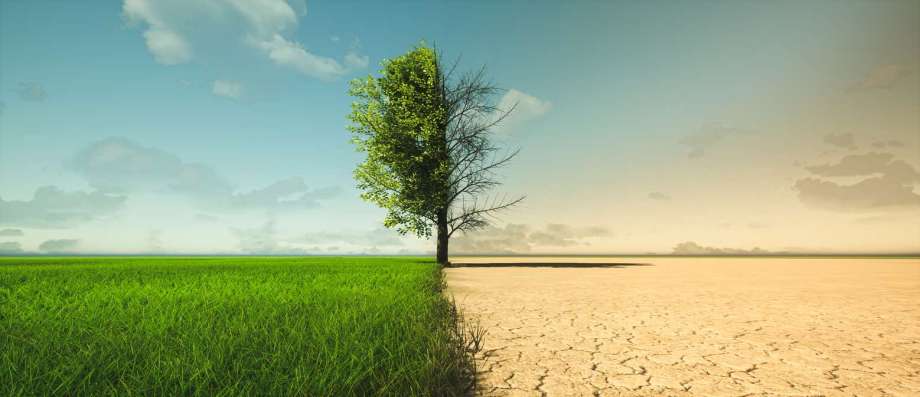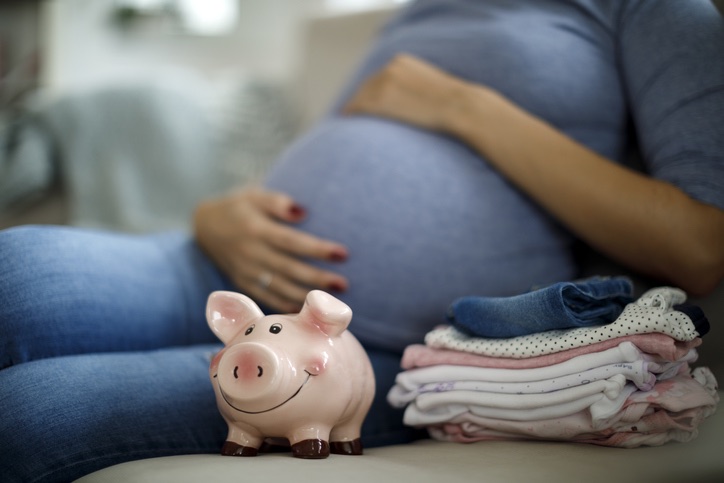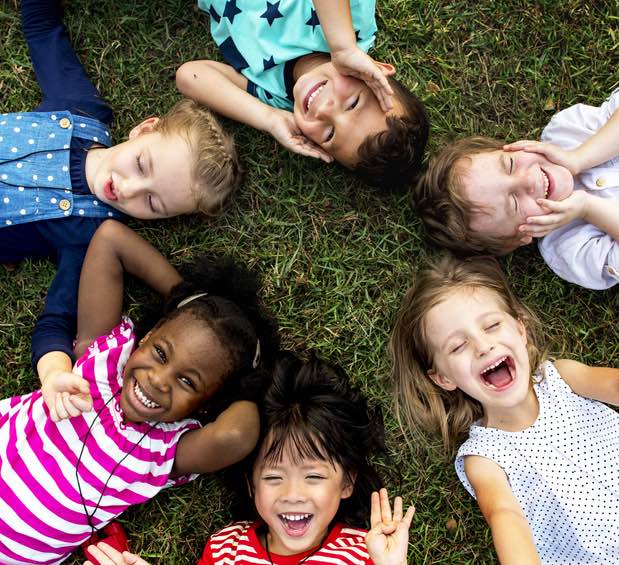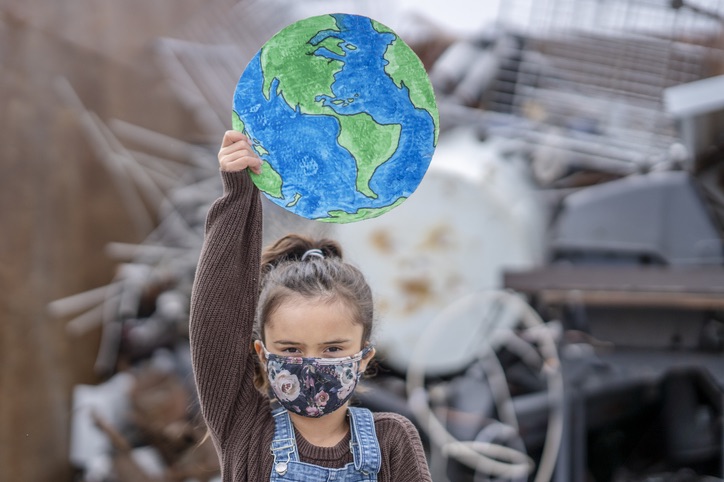Climate Crisis is Affecting People’s Decisions to Conceive

Global warming, climate change, El Nino, heat waves, and extreme weather events are all buzzwords that climate scientists and the media have been tossing around for decades. Most of us know about the hole in the ozone from greenhouse gas emissions, the depletion of natural resources as generations rely more heavily on fossil fuels, and that we all have a carbon footprint. But, what do all these things have to do with family planning and people’s decisions regarding conceiving children?
The answer is: a lot. There are many reasons a person may or may not choose to have a baby—personal preference, finances, career stability or growth, and now, climate change is also a huge factor.
At my age, I am on the cusp of the environmental revolution; born in 1980, I was roughly 10 when global warming became front-page news and slowly became a household topic. On June 23, 1988, Dr. James Hansen, the then president of NASA, stated in landmark testimony before the U.S. Senate Energy and Natural Resources Committee:
“Global warming has reached a level such that we can ascribe with a high degree of confidence a cause-and-effect relationship between the greenhouse effect and observed warming…In my opinion, the greenhouse effect has been detected, and it is changing our climate now.”
Many consider this testimony the turning point at which people began paying attention to climate change. Therefore, children born roughly a decade after me in the 90s have grown up in a world focused on personal environmental impact and the effects of climate change.
Growing up in a world focused on the changing climate, rising global temperatures, and extreme weather events, it makes sense that these children, now adults, would factor environmental concerns into their decision to have children.
Changes in Maternal Age & Birth Rates

Environment aside, women in general are waiting longer to have children as they pursue advanced degrees and focus on their careers. For example, in 1980, the average age for a woman to have her first baby was the early 20s and even teens, particularly if unmarried and didn’t have an advanced degree.
According to a study in the New York Times (2016), the average age evened out and fell between 20 to 30, averaging 26.3 across the country. However, an unmarried woman without an advanced degree still averaged 23.1, whereas a woman with an advanced degree, marriage not specified, averaged their first child at 30.3. A few years earlier, I had my first child and fell squarely in the mentioned demographic; I was 30 and working towards my master’s degree.
Additionally, the COVID-19 pandemic greatly impacted birth rates worldwide. According to data from the U.S. Census Bureau, the U.S. population grew slower in 2021 than in any other year since the nation’s founding, a mere 1%.
With declining birth rates, climate change, and concerns about the planet’s future, what environmental concerns are young people factoring into their decision making when it comes to having kids?
Finances and Expenses

Having a child now is more costly than at any other time in U.S. history. A 2015 report from the USDA estimates raising a child from birth through 18 (not counting college and the fact that most kids live with their parents until their early or mid-20s) is $233,610.
So, how do the impacts of climate change affect these numbers? Well, in a few ways. First, depending on where you live, if you’re facing extreme heat waves, you’ll be spending more to stay cool, whether on air conditioning, running lots of fans, or spending money on a place to be other than home that is cool and comfortable like a swim club or indoor play areas.
Secondly, increased temperatures usually come with decreased air quality. Therefore, if your child has asthma or other health issues, you may end up spending more on healthcare as a result of air pollution, increased pollen counts, frigid air, etc.
Child Development and Health

For those living in developing countries, having multiple children typically results in a strain on finances, resources, the mother and children’s mental health, and the family's overall well-being.
UNICEF points out that children worldwide face one if not several climate-related impacts such as drought, scarcity of clean drinking water, flooding, and air pollution. All of these factors negatively impact health and contribute to malnutrition and disease. Children who are undernourished and focused on survival can hardly hope to learn, develop, and enjoy a positive quality of life.
Additionally, the lack of proper healthcare and nutrition for pregnant women affects birth outcomes and reproductive health; preterm births or low birth weight, congenital disabilities, and even stillbirths are more likely in areas suffering from extreme consequences of climate change.
For those in developed nations, concerns over population growth, air quality, and carbon footprints probably come to mind first. However, many young adults in western countries hope that by decreasing the number of children they have or by having none, they will contribute to the mitigation of some of these disastrous effects. Recent research has pointed out that simply decreasing births by one child per family would decrease CO2 emissions by 58.6 tons annually.
Climate Change and the Future

More and more adults are increasingly concerned about the planet they are leaving for their children and grandchildren.
The Intergovernmental Panel on Climate Change IPCC is a body of the United Nations that focuses on assessing the science and outcomes for the planet and human population based on climate change.
Their most recent report (February 2022), which is still not fully published, offers some stark figures for the future of our planet. Below are some figures solely from the North American Assessment. The full report can be accessed here.
North American Findings:
- Human life and safety across North America will be at risk due to rising sea levels.
- Coastal and urban flooding affects cities, and will remain at risk of displacing people, infrastructure, and transportation.
- Limited water supplies in the western U.S. and Mexico have heightened water security. There is an increased risk of water scarcity during summer peak water demand periods.
- Places such as California have faced extreme drought and wildfires in recent years and are especially at risk.
- Rising air, water, and ground temperatures have disrupted fragile ecosystems and contributed to the redistribution and mortality of plants, fish, birds, and mammals.
- Climate change has negatively affected human health. High temperatures and extreme heat exposure have increased mortality rates and have affected public health and morbidity.
The IPCC states that unless specific interventions and initiatives are taken, global climate change will continue to decline quality of life and sustainability.
Choosing to have a baby is an incredibly personal decision and one that is not usually made lightly or without thought. Only you or you and your partner can make the eventual decision, and should you choose to become parents, you should revel in the joy that a baby can bring into your life. However, given the human rights concerns and global implications of climate change, it is little wonder that today’s young people are considering the environment when making this major decision.

